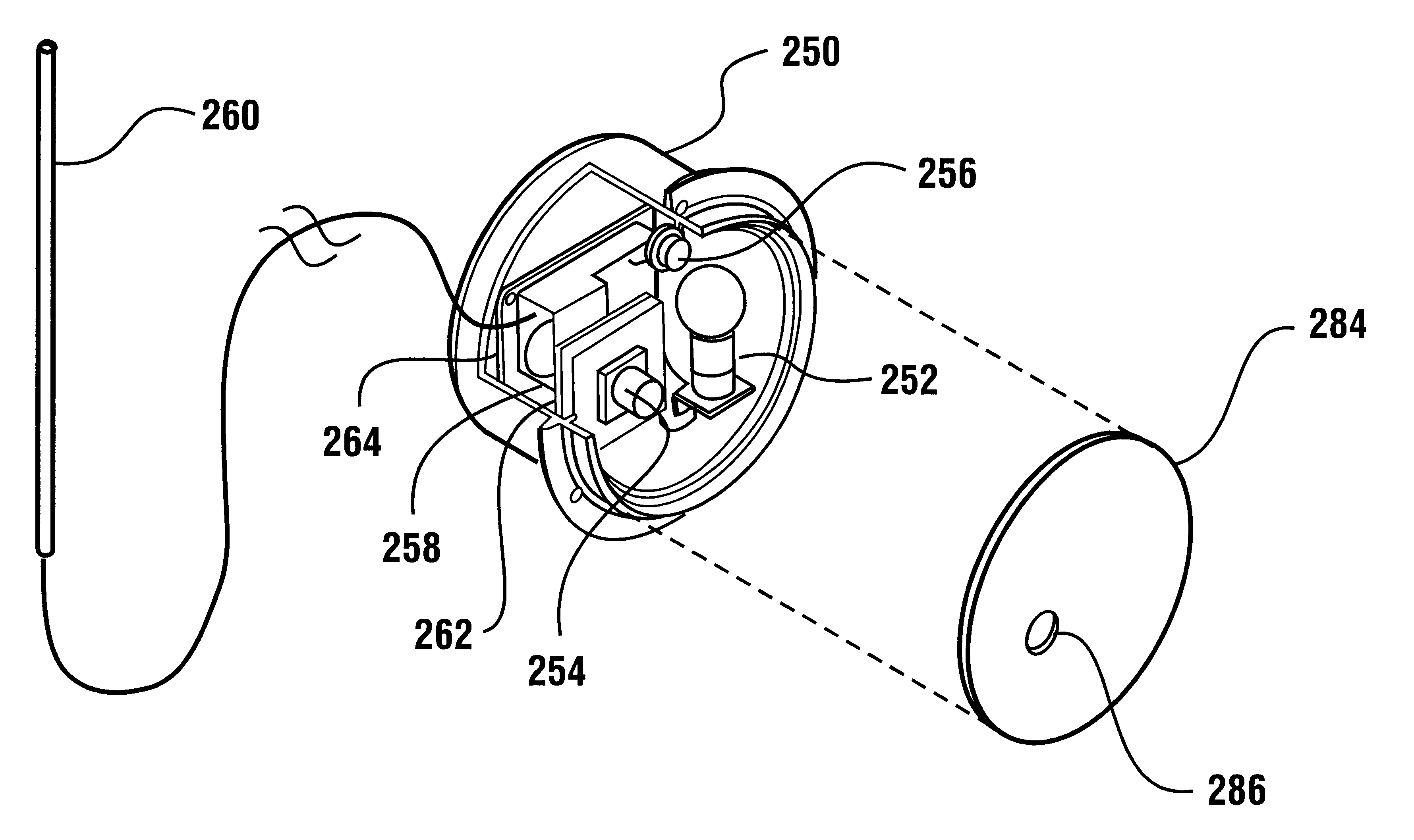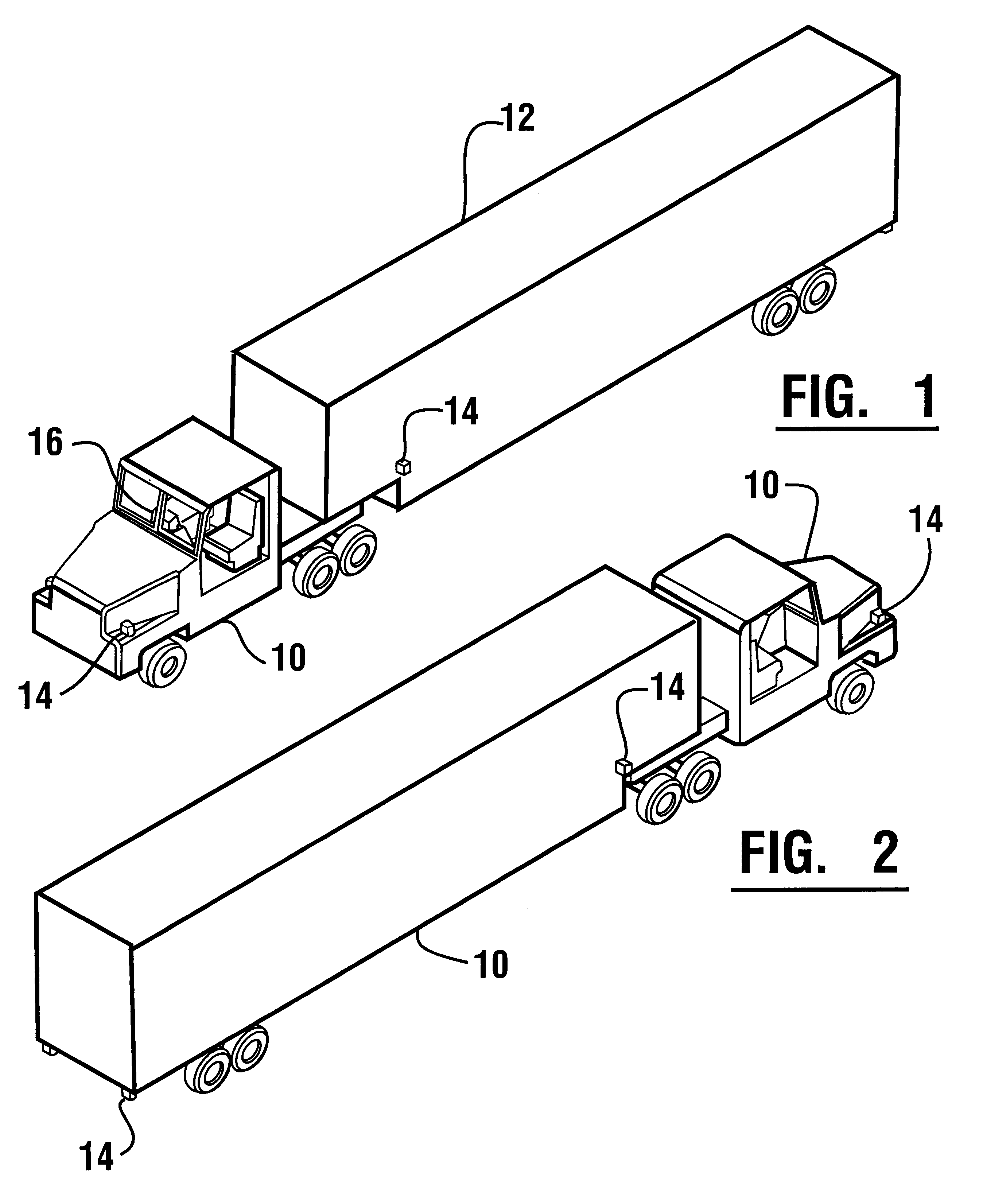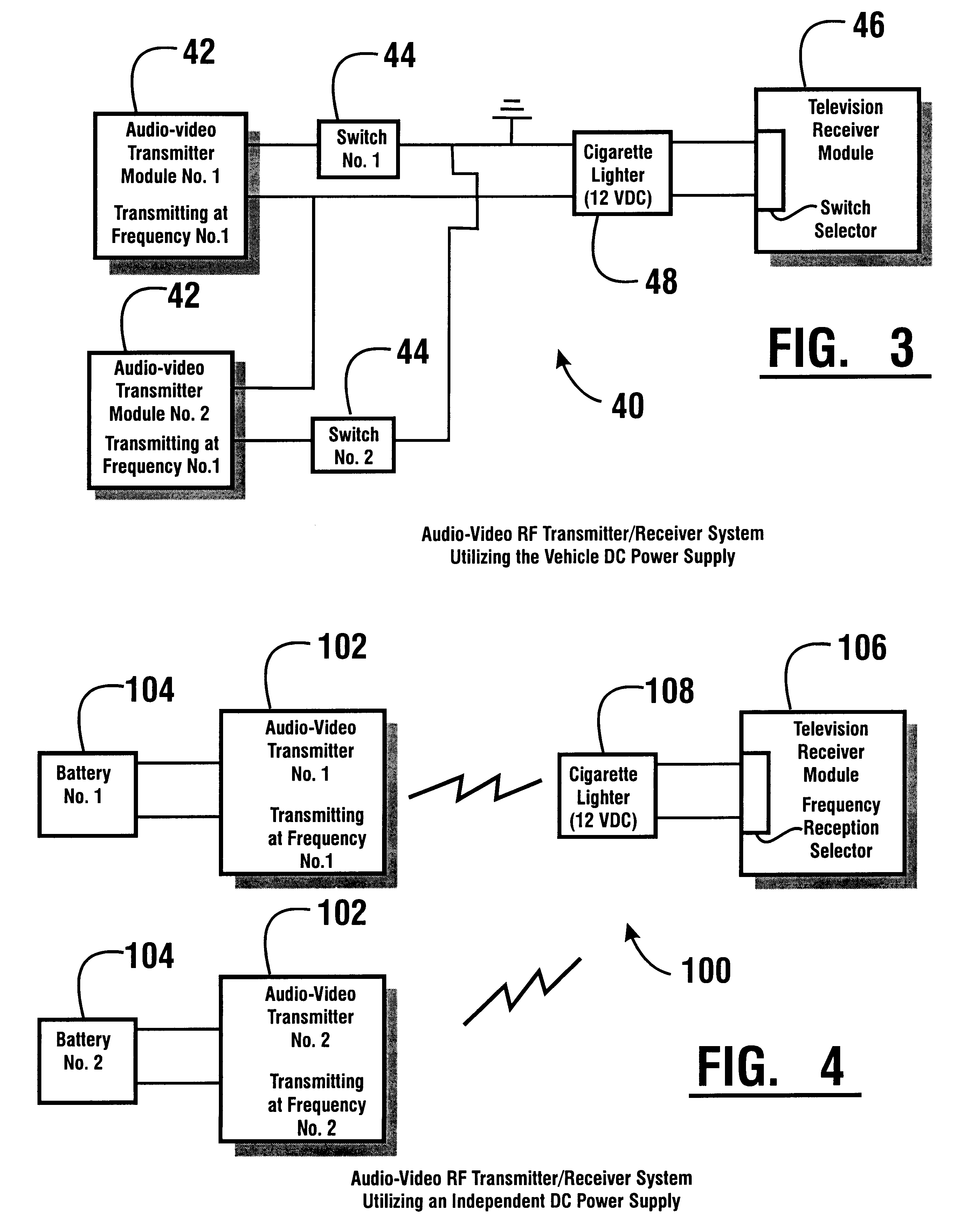Video and audio transmission apparatus for vehicle surveillance system
a vehicle surveillance and video and audio transmission technology, applied in the field of video and audio transmission apparatus for vehicle surveillance systems, can solve the problems of difficult or impossible operation for operators, the inability to use mirrors to enable drivers to see certain areas around the vehicle, and the inability to view the area directly behind or underneath a semi-trailer system, etc., to achieve the effect of enhancing such monitoring
- Summary
- Abstract
- Description
- Claims
- Application Information
AI Technical Summary
Benefits of technology
Problems solved by technology
Method used
Image
Examples
embodiment 40
An example of the components that would make up an audio-video transmission module is shown schematically in FIG. 7. The components include a miniature video camera 200 that is connected to a radio frequency wireless transmitter 202. The transmission module also includes a microphone 204 that is similarly connected to the transmitter. The transmitter in the embodiment shown is powered on a line 206 from the DC power source of the vehicle. As shown in this embodiment, a decoder switch 208 is used for turning the transmitter on and off. Of course, the decoder switch 208 is only used in embodiments of the invention like embodiment 40 previously discussed in which the transmission modules transmit on the same frequency. In other embodiments where transmission modules transmit on different frequencies, decoder switch 208 is not required. Of course the transmitter is grounded to the vehicle as shown to enable the transmitter to both obtain power and to avoid interference and inconsistent ...
first embodiment
a transmission module enclosed within a tail light housing generally designated 250 is generally shown in FIG. 8. The tail light housing encloses a two-filament bulb 252 of the conventional 12-volt type. As previously discussed, the system for powering bulb 252 may involve switching within the vehicle to ground the line to the bulb to turn it on, or alternatively, to deliver power thereto. The transmission module may be supplied continuous power from the vehicle electrical system or it may have re-chargeable battery power when electrical power from the vehicle electrical system is not continuously provided. The audio-video transmission module includes a miniature video camera 254 of the type previously described as well as a microphone 256. The camera and microphone are electrically connected to a transmitter 258 that transmits a radio signal through an external antenna 260.
Electronic components are mounted in the housing to minimize the potential damage due to shock and vibration. ...
second embodiment
the invention shown in conjunction with a recreational vehicle type tail light generally indicated 300 is shown in FIG. 9. The transmission module is incorporated with the tail light components including a back up light bulb 302 and a tail and brake light bulb 304. The bulbs and the components of the transmission module are mounted on a base 306.
A miniature camera module 308 is supported on a shock resistant mount 310 in a manner similar to that previously described. A microphone 312 is also supported on the base. The microphone and camera are connected to a transmitter 314. The transmitter is connected to an unshaped antenna 316 which is configured to be fully within the housing. An advantage of having the antenna within the housing is that it is less conspicuous and also more tamper resistant.
The housing further includes environmental control features including a heating unit or heating / cooling unit generally indicated 318. The heater or heater cooler works in the manner previousl...
PUM
 Login to View More
Login to View More Abstract
Description
Claims
Application Information
 Login to View More
Login to View More - R&D
- Intellectual Property
- Life Sciences
- Materials
- Tech Scout
- Unparalleled Data Quality
- Higher Quality Content
- 60% Fewer Hallucinations
Browse by: Latest US Patents, China's latest patents, Technical Efficacy Thesaurus, Application Domain, Technology Topic, Popular Technical Reports.
© 2025 PatSnap. All rights reserved.Legal|Privacy policy|Modern Slavery Act Transparency Statement|Sitemap|About US| Contact US: help@patsnap.com



